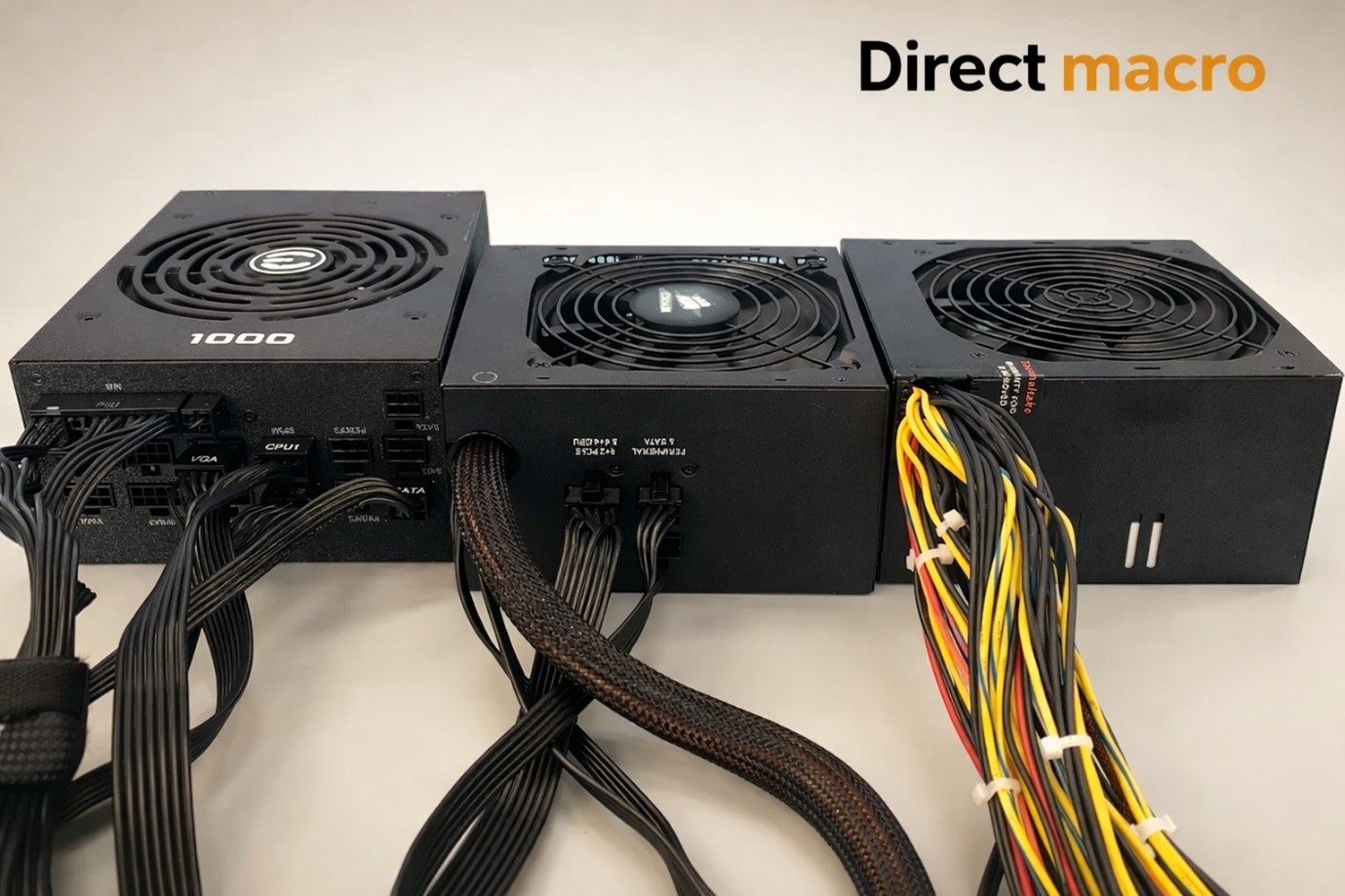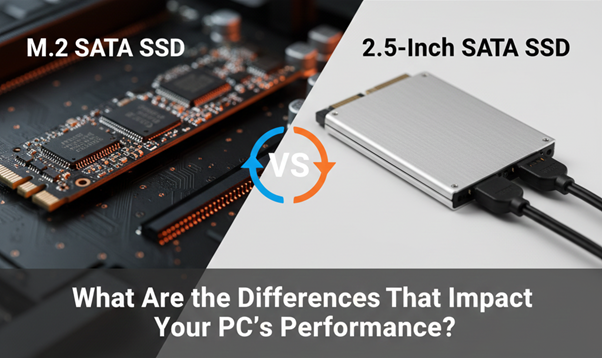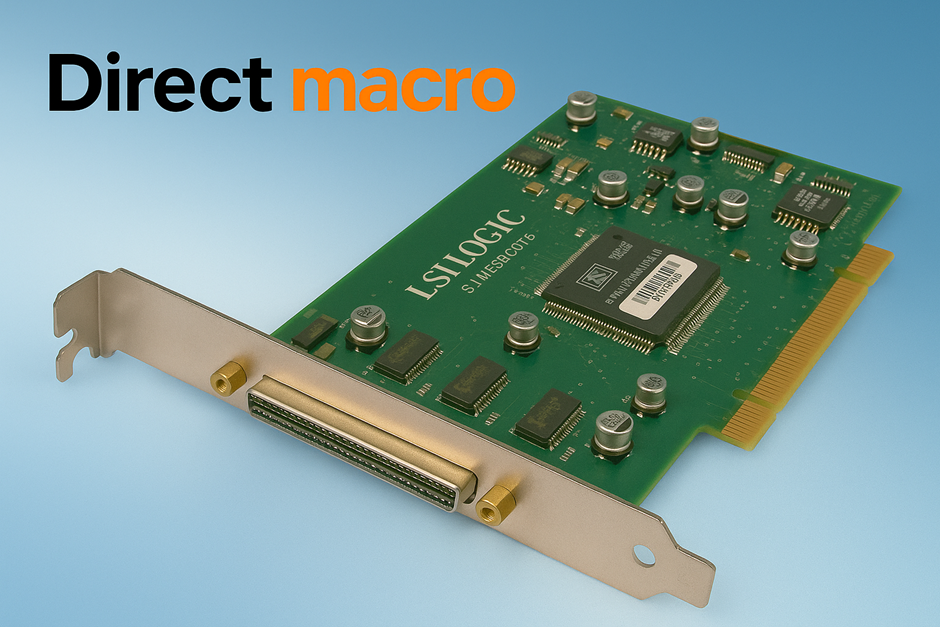Transform Your Data Center Next Gen PCIe Gen5 SSDs for AI and Big Data Acceleration
Introduction: The Evolution of SSD Technology
Ongoing innovations of AI, Big Data analytics and real-time processing are greatly expanding data, which is now pushing the limits of more conventional data storage infrastructures. Organizations and data centers are struggling to meet the demands of the workload with more reliable and high-performance storage systems. To meet the seamless storage requirements, the new PCIe Gen5 SSDs are poised to revolutionize the performance and transform how we manage and access data.
In this blog we will discuss the predictive power and capabilities of PCIe Gen5 SSDs, their astonishing speed and efficiency they offer, as well as their vital significance in both enterprise and personal devices.
What Are PCIe Gen5 SSDs?
PCIe Gen5 SSDs are solid-state drives that utilize the Gen5 PCIe (Peripheral Component Interconnect Express) interface. PCIe Gen5 SSDs are capable of offering speeds of up to 14 GB/s read and 12 GB/s write, depending on the configuration, with double the bandwidth of PCIe Gen4, representing a significant upgrade.
Because these drives utilize NVMe (Non-Volatile Memory Express) protocols with ultra-low latency, they are ideal for applications that need high-speed access to heavy datasets. Gen5 SSDs are perfect for high-speed enterprise SSD solutions or upgrading server infrastructures. Gen5 SSDs are the new standard for high-speed configurations.
PCIe Gen5 vs PCIe Gen4: Why It Matters?

Gen5 NVMe SSDs reduce data bottlenecks and accelerate time-sensitive processes such as AI inference, machine learning training and large-scale simulations by doubling the available bandwidth.
Why Upgrade? SSD vs HDD Performance
For a long time, the debate between SSD vs HDD performance has been clear. SSDs have been outperforming HDDs in terms of speed, responsiveness and durability. Although HDDs are cheaper and affordable per gigabyte, the older technology of spinning disks makes them slower to boot, sluggish to load applications, and are limited by mechanical parts. These things reduced overall system fluidity.
Checkout this comparison chart of SSD vs HHD performance:

- HDDs: Having spinning disks and read/write heads results in a very slow transfer speed of 50 to 200 MB. They also have slow access speeds, problems with fragmentation and mechanical failures.
- SATA SSDs: SATA SSDs offers significant improvement over HHDs. through offering speed up to 550 MB/s, but still bottlenecked by the SATA interface.
- PCIe Gen4 NVMe SSDs: These SSDs are leveraging the PCIe interface and have become the new standard for gaming. These drives offer a whopping 7,000 MB/s, meaning booting and loading are faster than ever. This represents a dramatic increase that transforms desktop and laptop performance.
- PCIe Gen5 NVMe SSDs: Gen5 NVMe SSDs may theoretically read and write data in a sequence at speeds of up to 14,000 MB/s (14 GB/s) and higher. This unparalleled speed is so fast that they are essential for programs where every millisecond matters.
The jump from PCIe Gen4 to PCIe Gen5 is more than just a minor update; it is a significant change that enables computers to run more efficiently, especially when handling workloads that fill storage from the previous generation.
What Makes Gen5 NVMe SSDs Stand Out?
The PCIe 5.0 interface enables Gen5 NVMe SSDs to operate at higher speeds. PCIe (Peripheral Component Interconnect Express) is a computer expansion bus standard that connects components directly to the motherboard, functioning as a high-speed serial interface. PCIe 5.0 is capable of effectively doubling the data transfer rate of its predecessor, just like all previous generations. PCIe 5.0 doubles the bandwidth per lane from 16 GT/s (giga transfers per second) in Gen4 to 32 GT/s. It translates to a theoretical bandwidth boost of nearly 16 GB/s, for an x4 lane configuration, which is common for internal SSDs.
This increased bandwidth allows PCIe Gen5 SSDs to deliver:
- Unmatched Sequential Read/Write Speeds: PCIs Gen5 is critical for large file transfer, editing videos, as well as loading massive datasets.
- Significantly Higher IOPS – Input/Output Operations Per Second: It is also crucial for real-time analytics, transactional database, and in virtualized environments, and many other use cases with small packets of data are accessed easily.
- Lower latency: It also makes data easily accessible and processable with minimal delays, which improves application response and overall system fluidity, resulting in smoother user experiences.
These performance metrics are not simply theoretical. You can gain benefits from these performance metrics as a user or an organization to improve your operational efficiency.
Beyond Speed: Enhanced Efficiency and Reliability
The efficiency and reliability features of PCIe Gen5 SSDs make them more attractive for demanding environments, while speed is a primary draw. Modern Gen5 controllers consume a significant amount of power during high-performance operations, so they are designed to be more efficient with advanced power management. This is particularly vital for Data Center SSDs, where power efficiency directly impacts operational costs and environmental footprint.
Also, enterprise PCIe Gen5 SSDs are built with other essential features, which include:
- End-to-End Data Protection: Safeguarding the host and the data stored in the NAND flash memory.
- Power-Loss Protection (PLP): Special capacitors built on the drive ensure the data in transit safely written to the NAND during unexpected power outages, avoiding data erasure.
- Advanced Error Correction Code (ECC): Methods to detect right data and fix data errors, which enhance data reliability and the drive’s life span.
- Thermal Management: Overheating can be a result of excessive power supply, and high temperatures can also result in throttling. Sophisticated cooling solutions also help maintain optimal operating temperatures.
Combining all these features helps ensure the reliability and stability required for mission critical applications. It also makes the PCIe Gen5 SSDs a good buy for all consumers and enterprises.
PCIe Gen5 SSDs in the Enterprise: Powering Data Centers and AI Workloads
PCIe Gen5 SSDs shine in an enterprise environment due to their true potential, especially in the context of Data Center SSDs and specialized applications. The demand for High-Speed Enterprise SSDs has increased significantly with the rise of AI, Big Data, and cloud computing.
1. Optimizing for Big Data
SSDs for Big Data applications need to ingest, process, and analyse vast quantities of information rapidly. Traditional data storage systems often slow down the analytical workflows. Gen5 SSDs offer the required bandwidth and IOPS to:
- Help accelerate data ingestion for analytics platforms.
- Enhance the efficiency of distributed file systems like Hadoop and Spark.
- Enable real-time data-driven decision-making by lowering access latency to large datasets.
2. Accelerating AI and Machine Learning
Training and inference for AI and machine learning models require a substantial amount of data, especially for GPUs, which are the primary processing units of AI, and necessitate constant, high-speed access to training data to maximize their utilization. SSDs for AI workloads are therefore essential. Gen5 SSDs help in:
- Speeding up the data loading process for deep learning frameworks.
- Providing information quickly to reduce idle GPU cycles to keep processing units busy.
- Enabling larger and more complex AI models to be trained and deployed efficiently, especially in high-performance computing (HPC) clusters.
3. High-Speed Enterprise SSD Solutions
Aside from AI and Big Data, High-Speed Enterprise SSDs utilizing PCIe Gen5 are enhancing numerous data center activities:
- Virtualization and Cloud Computing: Boosts VM density and improves overall responsiveness.
- Databases: Enhanced query and transaction processing for both OLTP (Online Transaction Processing) and OLAP (Online Analytical Processing) databases.
- Content Delivery Networks (CDNs): Enhanced speed for web and media content delivery.
- Financial Services: Real-time risk assessment and low-latency trading.
Due to the high workload requirements for PCIe Gen5 SSDs, their ability to consistently read and write data at high speeds makes these SSDs critical for modern, productive data centers.
Choosing the Right Internal SSD: Key Buying Factors
If you are looking to buy SSD online for enterprise business usage, here are a few key buying factors you need to consider besides performance and speed for choosing the right internal Gen5 PCIe SSDs:
- Capacity
These SSDs come in a variety of sizes from 1TB to 8TB or more for enterprise models. Choose your desire capacity according to your storage needs. - Form Factor
Most Gen5 SSDs come in the M.2 2280 form factor. Check if your motherboard or server has compatible M.2 slots. U.2 and U.3 form factors are popular for Data Center SSDs. - Cooling
Cooling is significant due to the increase in performance and power. Gen5 SSDs have greater power consumption and performance, which generates more heat. Many consumer models include large heatsinks, and proper airflow is crucial for enterprise solutions. - Endurance (TBW/DWPD)
Consider the TBW (Terabytes Written) and DWPD (Drive Writes Per Day) metrics for enterprise-grade use, which help in determining the lifespan of the SSD under heavy writing workloads. - Controller and NAND Type
Top brands will have optimal performance and endurance by using high-end controllers and NAND flash memory (TLC, QLC). - Price
PCIe Gen5 SSDs are a more expensive product. Evaluate the cost-benefit for your specific use case.
Future-Proofing Your Infrastructure with PCIe Gen5
Purchasing PCIe Gen5 SSDs is equivalent to getting ahead of the game in terms of long-term protection for your computing system. As more data-intensive applications emerge and technologies such as generative AI gain traction, the demand for high-bandwidth, low-latency storage will rise. Individuals and organizations that adopt Next-Gen SSDs now will be better prepared to face the complex challenges and capitalize on the opportunities of the digital world in the future, thereby reducing costly slowdowns and optimizing system performance of their hardware.
Where to Buy PCIe Gen5 SSDs Online?
If you are ready to make an upgrade, you can buy SSD online from reputable retailers and authorized sellers such as Direct Macro, the most trusted IT Hardware store around the globe. Remember to check for:
- Verified product specifications such as read/write speeds and controller type
- Warranty coverage (should range from 3 to 5 years)
- Legitimate vendors listings
- Business-level customer support for enterprises bulk orders
Online platforms now offer specialized bundles for deploying high-speed enterprise SSDs for businesses transitioning into AI, edge computing, and real-time analytics.
Final Thoughts
PCIe Gen5 SSDs are not just another step in the storage evolution; they are a revolution and game-changer. Next-Gen SSDs are setting new benchmarks for data performance while also offering unparalleled efficiency, reliability and delivering fastest speed. They are set to become the backbone of high-performance computing. It will be ideal for users and content creators who need to accelerate AI workloads and big data analytics in the data center. With wider adoption, prices will become more accessible than they are now, and you will truly be able to unhindered data access freely.
Do you want to have an unmatched experience with your system? Then it’s time to consider the power of PCIs Gen5 SSDs. Don’t miss the opportunity to buy PCIe Gen5 SSD online. For support call us at (855) 483-7810 or website our official website for bulk purchase.
Frequently Asked Questions
- Are PCIe Gen5 SSDs compatible with Gen4 motherboards?
Yes, PCIe Gen5 SSDs are backward-compatible with Gen4 slots which enables them to operate at Gen4 speeds. A Gen5-compatible motherboard is required to enjoy full performance. - Are Gen5 SSDs worth it for gaming?
Gen4 SSDs are sufficient for many games. However, future AAA titles with heavy asset loading may benefit from Gen5 speeds, especially with Direct Storage. - What makes Gen5 NVMe SSDs better for data centers?
Compared to previous generations, Gen5 NVMe SSDs have significantly higher bandwidth, IOPS and endurance, which is very significant for enterprise-grade data centers. - How do SSDs help with AI workloads?
SSDs significantly reduce training and inference times by responsive access to datasets, models, and real-time processing queues. It is significant for AI workloads scalability. - Where can I buy reliable PCIe Gen5 SSDs online?
Gen5 SSD buyers from the U.S. and Canada can acquire hardware products from trusted online shops such as Direct Macro Hardware Store. Direct Macro offers verified products and delivers them directly from the manufacturer. You can also check our customers’ reviews before making a purchase.
Do you need advice on buying or selling hardware? Fill out the form and we will return.

Sales & Support
(855) 483-7810
We respond within 48 hours on all weekdays
Opening hours
Monday to thursday: 08.30-16.30
Friday: 08.30-15.30








